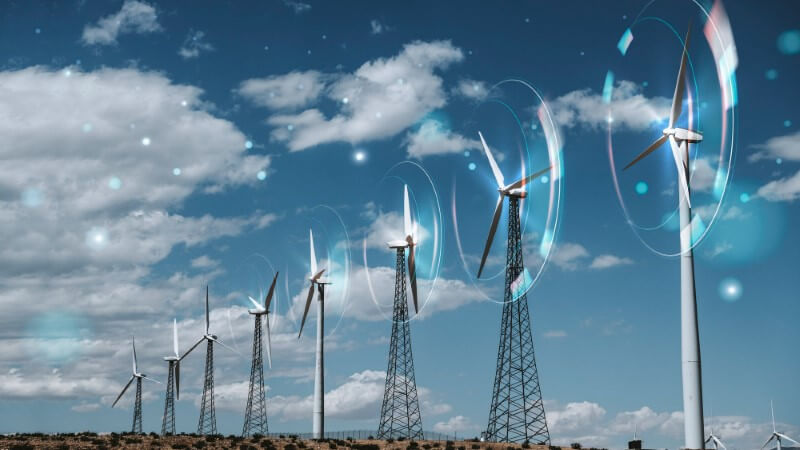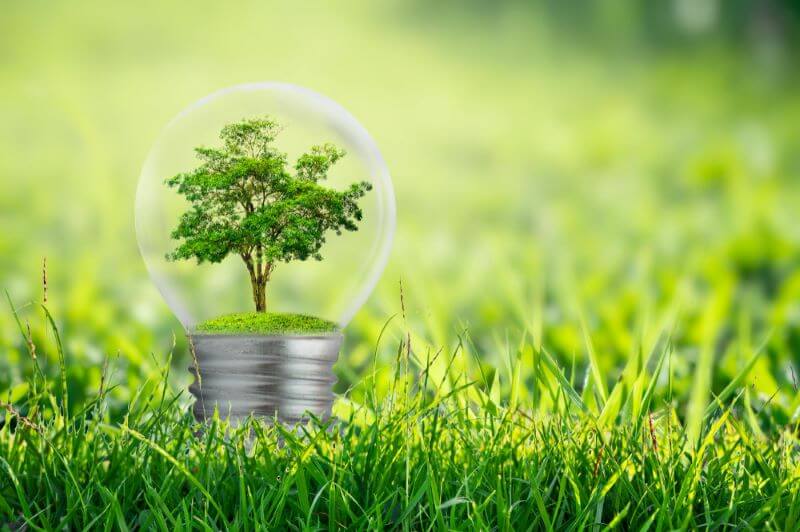The renewable energy sectors are currently witnessing a massive transformation globally with the prospect graph reaching new heights. With the rise of exhaustible energy crises and other environmental hazards, people have become much more aware of clean and sustainable energy sources. The natural sources of energy used by prominent global powers as renewable energy technology are solar radiation energy, wind energy, tidal energy, biomass energy, and geothermal energy.
Major countries like the United States, Canada, Sweden, Finland, and Brazil, among others, are going the extra mile to shoot up their renewable energy capacity. Governments are procuring advanced technologies and improvising them on a regular basis to leave no stone unturned on the renewable energy front. India being the 4th largest country in total renewable power capacity stands as a prominent energy force globally. Reportedly, India’s electricity generation from renewable energy is expected to surge up to 50-70% by 2040, a significantly high jump from the current renewable energy consumption of the nation.
The green energy industry has contributed at large to India’s climate change, environmental and health facets, social and economic development, and etc. Consequently, India has joined hands with the United nations in the mission of addressing the rising temperatures in all its major cities and help reducing carbon footprint on a global scale. In this blog, we have typically thrown light on the current trends, opportunities, and future prospects of the Indian green energy industry for our fellow readers.
The evolution of renewable energy sectors in India

Renewable energy as a sustainable alternative to fossil fuels is long thought and executed by India. India has been a part of major green energy initiatives like the United Nations Framework Convention on Climate Change (UNFCCC) in 1992 and the 2015 Paris Agreement. Both initiatives were to address the alarming rate of man-made greenhouse gases leading to global warming and catastrophic health conditions. The primary mission of India, a vast country with a huge population and per capita power consumption of
1.3 MWh, was to reduce carbon emissions significantly. The other major boost for India to accelerate its renewable energy hunt was the disruption of oil supply from the Middle East leading to a global recession.
However, India has far surpassed its ambition by attaining 175 GW of renewable energy by the year 2022 and is further targeting a whooping number of 500 GW by 2030. The energy graph is divided into 100 GW of solar energy, 60 GW of wind power, 10 GW of bio-power, and 46 GW of hydropower. India has a long-standing history of producing electricity from renewable energy, be it from the nuclear reactors of Bhabha Atomic Research Centre (BARC) or from the windmills developed by the National Aeronautical Laboratory (NAL). The International Solar Alliance (ISA) in India, inaugurated by honorable Prime Minister Narendra Modi in January 2016 has further spearheaded the use of solar energy and made it a domestic name used for cooking, lighting, etc. for millions of Indians.
There are multiple ongoing and future projects witnessed by India on the green energy aspect. For example, the National Hydrogen Mission launched in 2013 has successfully helped India to be the world’s largest hydrogen hub. We can stack more examples from the massive UJALA LED bulb campaign and the Net Zero Emissions initiative of the Indian Railways to reduce emissions by 40 million and 60 million tonnes annually.
Renewable energy demand in India at present
We can estimate the current energy demand in India from the quotes of the Union Power and Renewable Energy Minister RK Singh, “You see, my installed capacity of RE is about 190 GW, I have 103 GW under construction, that makes it 290 GW. I have 72 GW under bids, so I am already at about 360 GW.” The Indian government has started boosting wind power initiatives in the country for continuous power supply with a target to auction 10 GW on standalone wind projects.
Few of the government schemes and policies are the Jawaharlal Nehru National Solar Missions, the Production Linked Scheme — launched to increase the manufacturing capacities of solar panels, the Solar Park Scheme — dedicated to setting up 50 solar parks of 500 MW each, etc. In addition to these, Prime Minister Narendra Modi along with the Ministry of New and Renewable Energy (MNRE) has laid the foundation of two new transformative projects- the Pradhan Mantri Suryodaya Yojana, targeting to equip 10 million low and middle-income households across the country with rooftop solar systems and the Pradhan Mantri KUSUM (Kisan Urja Suraksha Evan Utthaan Mahabhiyan) program, dedicated to familiarizing Indian farmers with the concept of renewable energy technology.
Considering the fact that a lot of these initiatives are in fact for the middle-class sector of the country, the words of Elizabeth May, the world-famous environmentalist certainly struck my mind.
Effects of renewable energy demand in India
The renewable energy storm nationwide has its roots in multi-faceted developmental projects and stirred up enthusiasm among industry leaders and MNCs. India is all set to construct the world’s largest renewable energy project on the salt desert, the Rann of Kutch. The sprawling area of the project is as huge as the size of the entire Singapore and is expected to be clearly visible from space. The main ideation behind the project is to develop a self-reliant energy infrastructure that can light up over 20 million homes.
Further, the Airports Authority of India (AAI) has proposed three different contracts for Coimbatore, Raipur, and Aurangabad airports for the procurement of a staggering 3.7 MW of solar power through open access for the period of ten years. Following the contract, Coimbatore airport has made a really smart move by installing solar panels on the parking shade rooftops of two and four-wheeler vehicles to meet the demands. In another green India initiative, the silicon valley of India, Bengaluru was enriched by 7000+ newly planted trees as part of the B.GREEN program by B.PAC. The program was launched to combat the population boom and consequent environmental crisis of the city.
In 2021, the total investment in renewable energy sectors including both domestic and global was USD 18.8 billion and a big chunk of the amount came from private Indian companies. The share price performance of the concerned companies shows that it is two-way traffic as they enjoyed a significant rise in the Sensex. Adani Green Energy Ltd. and Reliance have witnessed a massive jump of 6000% and 350% respectively over a five year period. Thus, we can clearly state the fact that the renewable energy sector in India along with multiple other boons, has also bolstered the country’s economy.
Future prospects of the renewable energy sectors in India
The economic boom and massive employment opportunities across the country are two major effects of the renewables industry. According to National Research Development Corporation (NRDC) reports, India is steadily expanding its clean energy workforce and can potentially create 3.4 million new jobs in the solar, wind, hydropower, and biomass sectors. Another report from the Skill Council for Green Jobs (SCGJ) shows that 111,400 people have already been employed in the wind and solar energy markets as of today.
Rooftop solar and utility-scale solar are the dominant employers in the renewables industry and cover 77% of the market share. Moreover, the country is taking initiatives to train young professionals for all renewable energy specific job positions and 100,000 talents have already been trained and certified under the national-level solar energy Suryamitra training program till date. The employment positions of solar advisor, solar consultant, solar and wind engineer, sustainable energy analyst, energy efficiency consultant, hydrologist, and environmental compliance specialist among others are lying in the green energy industry as hotcakes ready to be served to thousands of talented professionals. On the other hand, multiple renewable energy giants like Enverus (8 offices with 1525 employees), Horizon Robotics (401 employees), Intersect Power, Avantus, NES Fircroft (2016 employees), and etc. are hiring experts across the globe for remote opportunities and are successfully operating remotely.
This gives us living proof that any renewable energy business trying to expand without geographical constraints can collaborate with the ongoing energy projects in India and hire talented candidates from across the country to work remotely. As crucial projects in the country need high intelligence resources and expert project planning, remote hiring will typically create a path for mutual growth and success.
Conclusion
Now, let us retrospect the key aspects and takeaways from it. First things first, it showed us how the renewable energy sectors have evolved over the years in India with the energy demand graph growing exponentially. Secondly, the Indian population is becoming more and more dependent on green energy power sources and adopting them in their daily habits and domestic use with an ample number of options available at hand. Moreover, the goal for reduction in carbon emissions and adoption of clean energy resources has led to many government and private initiatives with multiple vast projects in the pipeline.

This has opened the window for rapid economic development with heavy domestic and foreign investments, millions of employment opportunities, and convenience for expanding and doing business in India. Thus, the renewable energy industries have made India a lucrative market for business owners to explore, establish, and prosper.






 Schedule a free call
Schedule a free call